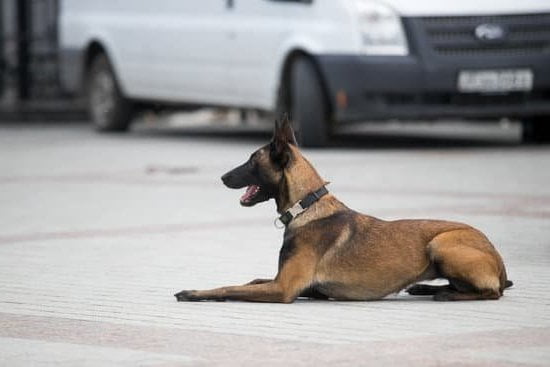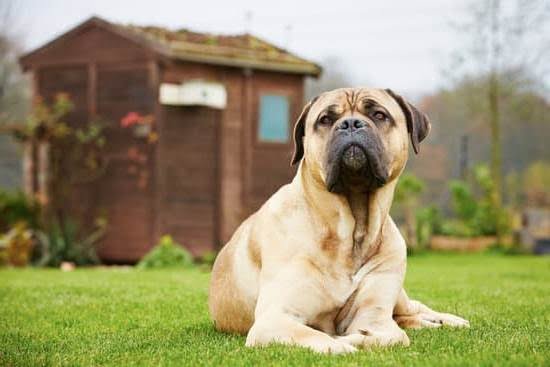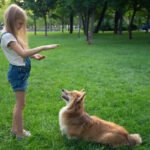Are you a mushroom enthusiast who is tired of spending hours scouring the forest floor for elusive morel mushrooms? Look no further. This article will show you how to train your dog to become your ultimate mushroom hunting companion.
Not only will it save you time and effort, but it will also enhance your overall outdoor experience. Using a dog to find morel mushrooms brings a multitude of benefits compared to other methods, and understanding the concept of scent training plays a crucial role in achieving success.
When it comes to finding morel mushrooms, using a dog can be incredibly effective and efficient. While other methods such as visual detection or random searching may yield results, they often require hours of painstaking effort. On the other hand, dogs possess an exceptional sense of smell that allows them to detect scents that are imperceptible to humans. By training your furry friend in scent recognition, you unlock their potential as skilled mushroom hunters.
Scent training is the key factor in teaching your dog how to find morel mushrooms. Dogs have an olfactory system far superior to ours, equipped with hundreds of millions more scent receptors than humans possess.
Their noses are capable of detecting even the faintest scent particles, making them ideal candidates for this task. Understanding the science behind a dog’s sense of smell is essential in harnessing their abilities and capitalizing on their instinctual drive to hunt and locate specific scents.
Selecting the Right Dog Breed for Morel Mushroom Hunting
When it comes to training your dog to find morel mushrooms, selecting the right breed is crucial. While any dog with a keen sense of smell can be trained for this task, certain breeds are particularly well-suited for mushroom hunting. In this section, we will discuss different dog breeds that excel in scent detection and provide characteristics to look for in a dog for this specific task.
One of the most important characteristics to consider is a dog’s sense of smell. Dogs have an incredibly powerful olfactory system, with some breeds having up to 300 million scent receptors in their noses. This allows them to detect scents at concentrations as low as one part per trillion. In the context of morel mushroom hunting, a dog with a strong sense of smell will greatly increase your chances of finding these elusive fungi.
There are several popular breeds known for their superb sense of smell and ability to excel in scent detection tasks. For morel mushroom hunting specifically, some suitable breeds include Labrador Retrievers, Bloodhounds, German Shepherds, and Beagles. These breeds possess not only an exceptional sense of smell but also the intelligence and trainability required for this task.
| Breed | Scent Detection Abilities | Trainability | Size/Physicality |
|---|---|---|---|
| Labrador Retriever | Excellent | Highly trainable | Medium to large size |
| Bloodhound | Exceptional | May be stubborn, but motivated by scent | Large size |
| German Shepherd | Great | Highly trainable, responsive to commands | Medium to large size |
| Beagle | Very good | Determined and eager to please | Small to medium size |
Keep in mind that while breed characteristics can provide a general guideline, individual dogs may vary. It’s important to assess each dog’s specific abilities and temperament before selecting them for morel mushroom hunting. Additionally, early socialization and consistent training from a young age are key factors in shaping a dog’s behavior and skills for this task.
Understanding the Science Behind a Dog’s Sense of Smell
Dogs are renowned for their exceptional sense of smell, and this unique ability makes them perfect candidates for finding morel mushrooms. To truly appreciate the effectiveness of using dogs in mushroom hunting, it is important to understand the science behind a dog’s sense of smell.
A dog’s nose consists of intricate olfactory receptors that allow them to detect scents humans cannot even perceive. Their nasal system is designed to pick up even the faintest aroma and analyze it with incredible precision. The number of olfactory receptor cells in a dog’s nose greatly exceeds that of a human, making their sense of smell approximately 10,000 to 100,000 times more powerful.
Furthermore, dogs have an additional organ called the vomeronasal organ (VNO) located above their palate. This organ helps them detect pheromones emitted by other animals and even certain plants, further enhancing their scent-detection capabilities. When it comes to locating morel mushrooms, a dog’s highly developed sensory system allows them to quickly pinpoint the unique odor emitted by these edible fungi.
To tap into your dog’s astounding olfactory prowess for mushroom hunting, it is crucial to acknowledge their superior sense of smell and make use of it during training sessions. Understanding the physiological aspects behind a dog’s nose will not only deepen your appreciation for their abilities but also inform your approach when teaching them specific scent recognition tasks.
During training sessions, engage your dog’s sense of smell by incorporating interactive games that encourage them to use their nose effectively. Utilize scent discrimination exercises using essential oils or other scented materials. Gradually introduce the scent of morel mushrooms into these exercises to train your dog to recognize and locate their unique aroma.
Remember that positive reinforcement plays a vital role in training your dog. Praise and reward them whenever they successfully identify and locate the scent you want them to associate with morel mushrooms. By understanding and harnessing the science behind a dog’s sense of smell, you can unlock their tremendous potential in finding these prized edible mushrooms.
Getting Started
Training your dog to find Morel mushrooms begins with building a strong foundation in scent recognition. By teaching your furry friend to detect and distinguish the unique scent of these delectable fungi, you’re setting them up for success in their mushroom hunting journey. In this section, we will walk you through some basic training exercises to get started on the path to developing your dog’s scent recognition abilities.
Step one in teaching your dog scent recognition is to introduce them to the specific smell of Morel mushrooms. Begin by obtaining Morel mushroom essential oil, which can be found at specialty stores or online retailers. Start the training indoors in a calm and familiar environment. Apply a small amount of the essential oil onto a cotton ball or a piece of fabric and place it in a jar or container.
Next, allow your dog to sniff the container while using a cue word such as “Mushroom” or “Find it.” Repeating this process several times will help your dog begin associating the cue word with the scent of Morel mushrooms. Make sure to reward your pup with treats and praise every time they show interest in or sniff the jar.
Once your furry friend has started mastering recognizing the Morel mushroom scent indoors, it’s time to move outside for further training. Find an open area where you can set up small containers with different scents, including one with Morel mushroom scent. Using the same cue word, instruct your dog to find the container marked with Morel scent. As they successfully locate it, reward them generously.
Consistent training sessions over time will strengthen your dog’s ability to recognize and differentiate smells associated with Morel mushrooms from other scents they may encounter outdoors. It is important to remember that dogs learn at different paces, so patience and persistence are key throughout this foundational training stage.
By mastering these basic scent recognition exercises, you are paving the way for your dog’s success in locating Morel mushrooms. In the next section, we will delve into more advanced training techniques and move from scent recognition to teaching your furry companion how to locate actual Morel mushrooms in real-life hunting scenarios.
Advanced Training Techniques
Transitioning from Scent Recognition to Locating Mushrooms
Once your dog has mastered the basic scent recognition exercises, it’s time to take their training to the next level and teach them how to locate actual morel mushrooms. This advanced training technique requires patience and consistency, but with the right approach, your dog will soon be able to effectively sniff out these prized fungi.
To begin this advanced training, start by gradually introducing real morel mushrooms during your scent discrimination exercises. As your dog becomes familiar with the scent of the mushroom, gradually increase the difficulty by hiding the mushroom in various locations or burying it lightly in soil. You can also incorporate different environments and weather conditions to replicate real-life hunting scenarios.
The Role of Repetition, Rewards, and Reinforcement
Repetition is key when teaching your dog to locate morel mushrooms. Consistently repeat training sessions and gradually increase their duration as your dog becomes more proficient. Remember to remain patient throughout the process, as every dog learns at their own pace.
Rewards and reinforcement are essential for motivating and encouraging your dog’s progress. When they successfully locate a hidden mushroom, reward them immediately with praise or a special treat specifically designated for training purposes. Providing positive reinforcement strengthens the connection between finding mushrooms and receiving rewards, reinforcing their understanding of the desired behavior.
Consistency is crucial when using rewards during training sessions. To prevent your dog from associating other scents or distractions with rewards, only offer treats or praise when they find morel mushrooms specifically. This helps them understand that they are being rewarded for locating mushrooms rather than getting distracted by unrelated scents or objects.
Refining Your Dog’s Skills
As you continue advanced training exercises, it’s important to challenge your dog by increasing the difficulty level gradually. Gradually introduce distractions such as other scents or objects while hiding the morel mushrooms to simulate real hunting conditions. This will help your dog focus on the specific scent of the mushrooms amidst potential distractions.
Additionally, vary the locations and terrains where you conduct training sessions to expose your dog to different environments. This will enhance their ability to locate morel mushrooms in various settings and improve their adaptability during actual hunting trips.
Remember, each dog is unique, and some may naturally excel at locating morel mushrooms while others may require additional time and practice. Be patient with your furry companion and continue reinforcing their skills consistently. With dedication and perseverance, your dog will become a reliable partner in the exciting world of morel mushroom hunting.
Practical Field Exercises
Now that your dog has been trained in scent recognition and locating morel mushrooms, it’s time to take your furry companion out into the field for some real hunting experience. This section will provide you with tips and guidance on how to navigate mushroom-rich environments and effectively utilize your dog’s skills.
Preparing for a successful mushroom hunting expedition starts with familiarizing yourself with the ideal habitats for morel mushrooms. These elusive fungi are typically found near dead or dying hardwood trees, such as ash, elm, or oak. Look for areas where the soil is moist and rich in organic matter. Forested regions with a mix of sunlight and shade are prime locations for morels to grow.
When heading out into the field, be sure to bring necessary equipment such as a backpack, water bottles, collection bags or containers for the mushrooms, and a GPS device if needed. It’s also important to dress appropriately for the weather conditions and wear sturdy footwear suitable for hiking through wooded areas.
As you navigate the mushroom-rich environments, pay close attention to your dog’s behavior and follow their cues. Dogs have an incredible ability to sense and locate morels even before they become visible to human eyes. Watch out for signs of excitement or heightened interest from your dog, such as intense sniffing or changes in body posture. These behaviors indicate that they may have detected the scent of morel mushrooms nearby.
Once your dog leads you to a potential mushroom spot, take extra care not to damage the delicate fungi during harvesting. Gently dig around the base of the mushroom with a small hand shovel or knife, being careful not to disturb the surrounding area. Place harvested morels into your collection bag or container with care.
Remember that safety should always be a top priority during mushroom hunting expeditions. Avoid areas sprayed with pesticides or herbicides, as these can be harmful if ingested by both dogs and humans. Additionally, be mindful of potential encounters with wildlife and take precautions to prevent tick bites by using appropriate repellents or wearing protective clothing.
Overall, hunting morel mushrooms with your dog can be an incredibly rewarding experience for both of you. Enjoy the adventure and the bond that is strengthened through this shared activity. With practice and patience, you and your furry friend will soon be harvesting delightful bounties of morel mushrooms together in the great outdoors.
Safety Considerations
Emphasize the importance of safety and precautionary measures while hunting for mushrooms
When it comes to mushroom hunting with your dog, ensuring their well-being should be your top priority. Safety considerations are crucial to protect both you and your furry companion during your mushroom hunting expeditions. It is essential to understand the potential hazards and take precautionary measures to keep your dog safe throughout the adventure.
One of the most critical safety precautions is to identify and educate yourself about toxic mushrooms that may pose a threat to your dog’s health. Familiarize yourself with the different species of mushrooms in your area, and learn how to distinguish edible morels from their potentially harmful look-alikes. It is advisable to consult with a local mycological society or an expert mycologist who can guide you in identifying mushrooms accurately.
Here are some other important safety considerations
- Before embarking on a mushroom hunting trip, ensure that your dog is up-to-date on vaccinations, including rabies.
- Protect your dog against ticks by using appropriate tick prevention products and performing regular tick checks after returning from each outing.
- Keep an updated identification tag on your dog’s collar at all times, providing contact information, just in case they get lost during the hunt.
- Avoid letting your dog eat any wild mushrooms while out in the field. Educate yourself about signs of mushroom poisoning in dogs and seek immediate veterinary assistance if you suspect ingestion.
- Be mindful of wildlife encounters during your mushroom hunts. Keep a safe distance from animals such as snakes or bears that may inhabit mushroom-rich environments.
- Carry a well-stocked first aid kit specifically tailored for outdoor adventures with dogs. This kit should include basic supplies like bandages, antiseptics, tweezers for removing ticks or splinters, and any necessary medications for emergencies.
Discuss potential hazards such as toxic mushrooms, wildlife encounters, and environmental dangers
While mushroom hunting with your dog can be a thrilling activity, it’s important to be aware of the potential hazards you may encounter. Toxic mushrooms are a significant risk during these outings. Some species of wild mushrooms can be highly poisonous to dogs if ingested. Symptoms of mushroom poisoning in dogs can range from gastrointestinal upset to more severe complications like organ failure or even death.
In addition to toxic mushrooms, wildlife encounters can also present risks while mushroom hunting with your dog. Depending on your location, you may come across animals such as snakes, spiders, or other potentially dangerous creatures. Keep a close eye on your dog at all times and avoid areas known for high concentrations of harmful or venomous species.
Environmental dangers should not be overlooked when considering your dog’s safety during mushroom hunting. Mushrooms usually thrive in wooded areas where rough terrain, fallen branches, or hidden holes pose potential threats to both you and your dog. Be cautious when navigating through these environments and take measures to prevent accidents or injuries.
Remember the following safety tips
- Stay vigilant and don’t let your dog stray too far from sight.
- Use a sturdy leash or harness to ensure control over your dog while exploring unfamiliar terrains.
- Train your dog to respond reliably to recall commands, which will help mitigate any issues that may arise during an outing.
- Carry plenty of water for both you and your canine companion. It’s essential to keep hydrated throughout the adventure.
- When planning a mushroom hunt in remote locations, inform someone about your whereabouts and expected return time as an additional safety precaution.
By taking these safety considerations into account, you can minimize risks for yourself and your loyal companion when venturing out on exciting Morel mushroom hunting expeditions.
Include recommendations for protective gear including tick prevention and first aid kits
Investing in appropriate protective gear is essential to ensure your dog’s well-being during mushroom hunting. Tick prevention is crucial, as ticks are prevalent in woodland and natural environments. These parasites can transmit diseases such as Lyme disease, so it’s important to protect your dog from them.
Tick prevention products such as topical treatments or collars are highly recommended. Consult with your veterinarian to determine the most effective tick prevention method for your dog based on their specific needs and the geographic area you plan to explore.
In addition to tick prevention, carrying a well-stocked first aid kit designed for outdoor adventures with dogs is essential. This kit should include basic supplies like bandages, antiseptics, tweezers for removing ticks or splinters, and any necessary medications for emergencies. Familiarize yourself with how to use each item in the kit before heading out so that you can administer care promptly if needed.
Remember to regularly check your dog for ticks during and after each mushroom hunting excursion. Promptly remove any ticks you find using fine-tipped tweezers or a tick removal tool. If you notice any signs of tick-borne illness, such as lethargy or lameness, consult your veterinarian immediately.
Taking these preventive measures and having the necessary protective gear will help ensure that your dog remains safe and healthy while enjoying the thrill of Morel mushroom hunting with you.
Troubleshooting Common Challenges in Morel Mushroom Hunting with Dogs
One of the most anticipated sections of training your dog to find morel mushrooms is troubleshooting common challenges that may arise throughout the process. While each dog is unique and may face different obstacles, there are some common issues that many owners encounter. In this section, we will address these challenges and provide solutions to help you overcome them and make your mushroom hunting expeditions with your canine companion successful.
One common challenge is behavioral issues during training sessions. Some dogs may show a lack of interest or motivation in scent recognition exercises, making it difficult to progress with their training. One solution for this is to use high-value rewards such as treats or toys to incentivize your dog. By associating finding the scent of morel mushrooms with positive experiences, you can increase their motivation and engagement in the training process.
Distractions can also pose a challenge when training your dog to locate morel mushrooms. Dogs have a keen sense of smell, which means they may become easily distracted by other scents in their environment. To overcome this challenge, it is important to gradually introduce distractions during training sessions. Start in a quiet and controlled environment, then gradually increase the level of distractions as your dog becomes more proficient in locating the scent of mushrooms.
Another common challenge faced by mushroom hunters with dogs is a lack of progress in their training. If you find that your dog is not progressing as quickly as expected, it could be helpful to review your training techniques and methods. It may be beneficial to consult with a professional dog trainer who specializes in scent work or hunting dogs. They can offer guidance on specific techniques that can accelerate the learning process for your dog.
| Challenge | Solution |
|---|---|
| Behavioral issues during training sessions | Use high-value rewards and positive reinforcement |
| Distractions during training | Gradually introduce distractions and increase difficulty |
| Lack of progress in training | Review training techniques and consult with a professional trainer |
Conclusion
In conclusion, training your dog to find morel mushrooms can be a rewarding endeavor that allows you to tap into their natural abilities and create a unique bond with your canine companion. Throughout this article, we have explored the benefits of using a dog for mushroom hunting, discussed the science behind their sense of smell, and provided step-by-step training techniques for scent recognition and locating mushrooms.
By selecting the right breed for mushroom hunting and understanding the intricacies of their olfactory system, you are setting yourself up for success in this adventure. Through patience, repetition, and positive reinforcement, you can teach your dog to recognize the scent of morel mushrooms and confidently lead you to their hidden treasures. The advanced training techniques and practical field exercises outlined here will further enhance your dog’s capabilities and enable fruitful mushroom hunting trips.
It is important to prioritize safety during mushroom hunting activities. This includes taking precautions against toxic mushrooms, wildlife encounters, and environmental hazards. Equipping yourself and your dog with protective gear such as tick prevention methods and first aid kits will help ensure a safe and enjoyable experience.
Frequently Asked Questions
Can you teach a dog to hunt morel mushrooms?
Teaching a dog to hunt for morel mushrooms may be a challenging task. While dogs can be trained to perform various tasks, such as sniffing out drugs or locating truffles, hunting for morel mushrooms is a bit different. Morels grow in specific conditions and are often found in wooded areas with certain types of trees and soil.
The scent of morels is also unique and not easily detectable by every dog. Nevertheless, with proper training, patience, and exposure to the scent of morels, it might be possible to train a dog to recognize and locate these prized mushrooms.
Can you teach a dog to find mushrooms?
Yes, it is possible to teach a dog to find mushrooms in general. Dogs have an exceptional sense of smell, and some breeds have been traditionally used for mushroom hunting, like truffle-hunting dogs. To successfully train a dog to find mushrooms, it’s crucial to start with positive reinforcement-based training methods.
Gradually introduce the scent of different mushrooms during training sessions and reward the dog when they correctly identify or locate them. Consistent training over time can improve their ability to sniff out mushrooms, making it an enjoyable activity for both the dog and their owner.
What’s the easiest way to find morel mushrooms?
The easiest way to find morel mushrooms involves understanding their preferred habitat and being observant while exploring suitable locations. Morels tend to grow in specific environmental conditions such as moist soil near dead or decaying trees like elm, ash, or oak forests in temperate regions during the spring season. Early mornings or after rainfall are ideal times for hunting morels as moist conditions promote their growth.
When searching for morels, keep an eye out for distinctive features such as their cone-shaped caps with ridges that resemble honeycombs blending into the forest floor’s colors. Additionally, traversing slowly while scanning the ground thoroughly will increase the chances of spotting hidden morels among leaf litter or tall grasses. It’s important to respect nature while collecting morels and avoid overharvesting to preserve their populations for future seasons.

Welcome to the blog! I am a professional dog trainer and have been working with dogs for many years. In this blog, I will be discussing various topics related to dog training, including tips, tricks, and advice. I hope you find this information helpful and informative. Thanks for reading!





